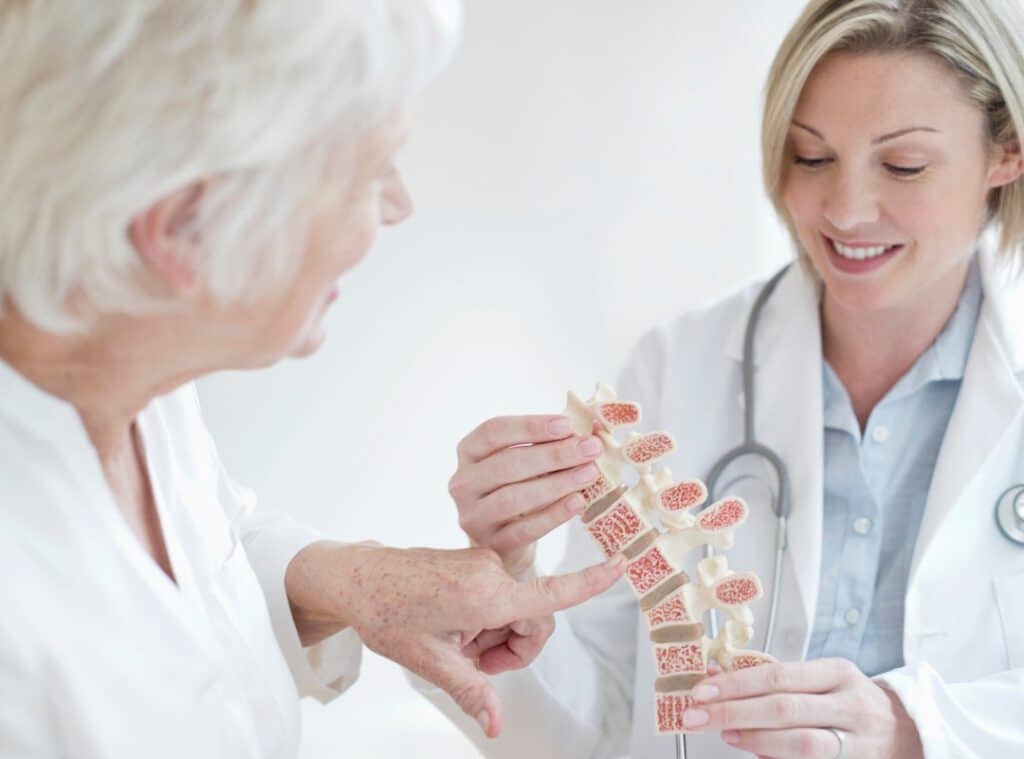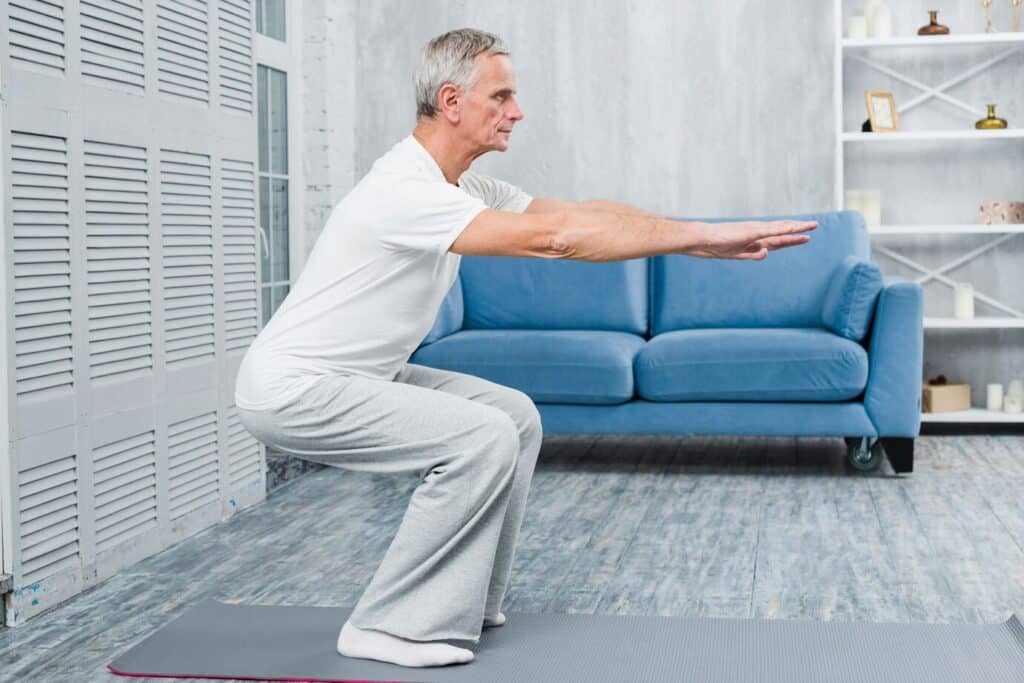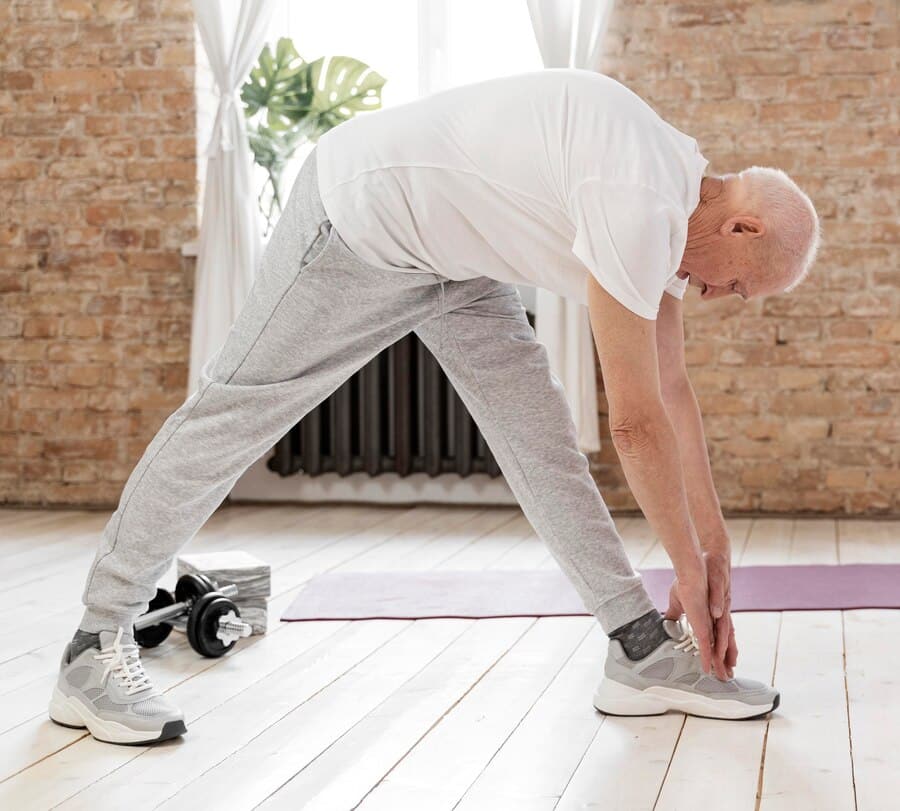As we age, staying proactive about bone health becomes increasingly essential—especially when it comes to recognizing the symptoms of osteoporosis. Osteoporosis is often called a “silent disease” because it can progress without obvious signs until a fracture occurs. But here’s the good news: if caught early, the condition can be managed effectively.
Whether you’re noticing subtle body changes or caring for a loved one, understanding the early warning signs of osteoporosis can help you take immediate steps. In this article, we’ll explore common symptoms, causes, and prevention strategies—while answering important questions like “Can osteoporosis be cured?” and “What are the five symptoms of osteoporosis?”. With the proper osteoporosis treatment, you or your loved one can preserve mobility, independence, and peace of mind.
For personalized care and support in managing bone health, visit Westmont of Chico.
Back Pain: One of the Most Common Osteoporosis Symptoms
Chronic or sudden back pain—especially in the lower back—is one of the early warning signs of osteoporosis. In older adults, this discomfort is often due to weakened vertebrae that compress or fracture easily. Left untreated, this can lead to severe spinal deformities, mobility loss, and increased risk of further injury.
Identifying and managing back pain early is essential. Treatments can include medications, lifestyle changes, and exercises that promote bone strength. At Westmont of Chico, we encourage residents to seek support at the first sign of discomfort.
Also, consider reading more about sarcopenia in the elderly, which often accompanies osteoporosis and contributes to spine instability.
Height Loss and Emotional Well-Being
A gradual reduction in height may seem like a minor annoyance, but it’s actually one of the key osteoporosis symptoms. Shrinking more than 1.5 inches can indicate spinal compression fractures—often occurring without any obvious trauma.
This physical change can also take an emotional toll. Many seniors experience low self-esteem or social withdrawal as a result. By acknowledging these impacts and seeking mental health support, individuals can maintain a better quality of life.
Good nutrition also plays a role. Learn more about the connection between nutrition and bone health to support both physical and emotional well-being.

Increased Risk of Fractures
One of the most dangerous outcomes of osteoporosis is fractures—especially in the hip, spine, or wrist. These injuries can occur from minor slips or even simple tasks like bending or coughing. Understanding the risks and taking preventative steps is crucial.
Here are common osteoporosis treatment and prevention strategies:
- Weight-bearing and resistance exercises
- Calcium and vitamin D supplementation
- Medications that slow bone loss or rebuild bone
- Home modifications to prevent falls
Regular screening and lifestyle adjustments can significantly reduce the risk of fractures. And if you’re wondering, what are five symptoms of osteoporosis?—fractures are certainly at the top of the list, alongside back pain, height loss, poor posture, and brittle nails.
Read more about bone density loss and its implications.
Recognizing Bone Density Loss: A Silent Signal
Bone density loss is at the core of osteoporosis—but you can’t feel your bones weakening. Instead, you’ll need to look out for signs like:
- Frequent fractures in the hips, wrists, or spine
- Noticeable height loss
- Chronic back pain
- Postural changes, such as stooping
- Low bone scan results
Regular bone scans are essential for early detection. If you haven’t had one yet and you’re over 65 (or younger with risk factors), now’s the time to schedule it.
Discover how hip pain and osteoporosis are closely linked—a fracture may not always be obvious right away.
Postural Changes: From Subtle Shifts to Serious Concerns
A hunched or stooped posture isn’t just a cosmetic concern—it’s often a signal of vertebral fractures caused by osteoporosis. This can lead to a downward spiral of poor balance, increased fall risk, and further fractures.
Incorporating posture-correcting exercises and strength training can slow or reverse these effects. Strengthening your core and back muscles provides the spinal support needed to improve your daily functioning.
Additionally, small changes like healthy eating habits can make a big difference in slowing osteoporosis progression.
Can Osteoporosis Be Cured?
A common question from those newly diagnosed is: Can osteoporosis be cured? While there is currently no cure for osteoporosis, it can be effectively managed. With the right approach, individuals can reduce symptoms, prevent fractures, and live full, active lives.
Management strategies may include:
- Prescription medications (e.g., bisphosphonates)
- Hormone-related therapy
- Nutritional adjustments
- Exercise regimens
- Lifestyle modifications
So while osteoporosis isn’t reversible, its impact absolutely is. Learn more about current osteoporosis treatment options from the National Institutes of Health.
What Are 5 Symptoms of Osteoporosis?
If you’re asking, what are 5 symptoms of osteoporosis?, Here’s a quick list to remember:
- Back pain—persistent or sudden
- Height loss—more than 1–2 inches
- Stooped posture
- Frequent fractures
- Decreased bone density on scans
Recognizing these signs early can help you take action before a serious fracture occurs. The sooner osteoporosis is identified, the more options you have for preventing further bone loss.
Check out the National Osteoporosis Foundation for additional educational resources and risk calculators.
Empower Your Bone Health Today
Ignoring the osteoporosis symptoms may lead to life-altering injuries, but being proactive can protect your independence and quality of life. From back pain and postural changes to unexpected fractures, these symptoms are not just signs of aging—they’re warning flags you shouldn’t overlook.
Start with a bone density scan. Consult your doctor to determine the best osteoporosis treatment for your specific needs. And if you’re caring for a loved one, encourage regular checkups and a safe home environment.
For expert guidance and supportive care, contact Westmont of Chico at 530-767-3886 or Schedule a Tour.
Discover how our compassionate staff and wellness-focused approach help residents live confidently—stronger every day.
Find Where You Belong
Dive into the vibrant life our Westmont communities have to offer.
Frequently Asked Questions
How do you treat osteoporosis in the elderly?
Treatment for osteoporosis in the elderly focuses on strengthening bones, reducing fracture risk, and managing pain. Doctors often recommend calcium and vitamin D supplements to support bone health, along with medications like bisphosphonates to slow bone loss. Weight-bearing exercises and balance training are recommended to enhance mobility and reduce the risk of falls. Lifestyle changes, such as quitting smoking and limiting alcohol intake, also play a crucial role in maintaining bone strength.
What kind of pain is caused by osteoporosis?
Osteoporosis pain is typically a result of weakened bones or minor fractures, most often in the spine, hips, or wrists. Many people experience chronic back pain due to compression fractures in the vertebrae, which can cause a stooped posture or loss of height. The pain can be sharp and sudden if a fracture occurs or dull and persistent as bones weaken over time. Managing this discomfort usually involves medications, physical therapy, and gentle exercises to strengthen surrounding muscles and improve flexibility.
How do you treat osteoporosis in the neck?
Treating osteoporosis in the neck involves preventing fractures and improving bone density through a combination of medication, physical therapy, and posture correction. Doctors may prescribe calcium and vitamin D supplements, along with medications that promote bone growth. Gentle neck-strengthening exercises can help support the cervical spine and reduce strain. In some cases, a soft neck brace or pain management therapy may also be used to provide stability and comfort.
What happens if you are diagnosed with osteoporosis?
If you’re diagnosed with osteoporosis, it means your bones have become fragile and more likely to break even from minor falls or injuries. Your healthcare provider will likely order tests to assess bone density and determine the best treatment plan. This may include lifestyle changes, medications, and regular monitoring through bone scans. With proper care and prevention strategies, many people with osteoporosis can maintain mobility, reduce fracture risks, and continue leading active, healthy lives.









